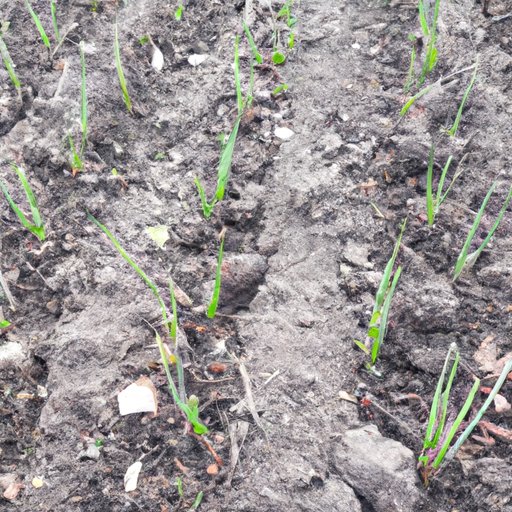Introduction
Onions are a versatile and flavorful addition to any recipe, and growing your own is a rewarding experience. Whether you’re a seasoned gardener or a beginner, this comprehensive guide will take you through the ins and outs of growing onions from start to finish.
A step-by-step guide on planting onion sets
Choosing the right onion sets is essential for a successful harvest. Look for sets that are firm, dry, and disease-free. Prepare the soil by removing any weeds and stones and adding compost or well-rotted manure to enrich the soil.
Next, space the sets about four inches apart and bury them about an inch deep with the pointed end facing up. Water the plants thoroughly, and continue to water them throughout the growing season. Weeding and fertilizing the onions regularly are also crucial for healthy plant growth. Harvest the onions when the tops turn yellow and start to wilt.
Understanding onion varieties
Onions come in many varieties, each with its distinctive flavor and texture. Red onions have a slightly sweet flavor and are perfect for salads and sandwiches. Yellow onions are the most common and are ideal for cooking and caramelizing. White onions have a milder flavor and are great for salads or as a garnish. Scallions have a mild onion flavor and are great in salads or as a topping for baked potatoes. Sweet onions have a low sulfur content, making them sweet and mild enough to eat raw. Each type of onion has unique growing conditions, so be sure to research the ideal growing conditions for the variety you choose.
The importance of soil quality
Good soil quality is essential for growing healthy and productive onion plants. Start by testing your soil to determine its pH level and nutrient content. Adjust the pH level as needed, and add the necessary nutrients, such as nitrogen, phosphorus, and potassium. Maintaining proper soil quality is critical for healthy plant growth and onion bulb development.
How to deal with onion pests and diseases
Onion pests and diseases can wreak havoc on your crop, so learning how to identify and control them is vital. Common onion pests include thrips, maggots, and cutworms, while diseases like onion rot and downy mildew can quickly spread if left unchecked. Organic and chemical control methods are available, but prevention is often the best approach. Proper watering, weeding, and fertilizing can help keep your plants healthy and resistant to pests and diseases.
Tips for growing onions in containers
Growing onions in containers is an excellent way to save space and grow fresh produce in small spaces. Choose a container that’s at least six inches deep and wide, fill it with a potting mix enriched with compost and fertilizer, and plant the onion sets about four inches apart. Keep the soil evenly moist, and fertilize the onions regularly. Harvest the bulbs when the tops start to wilt.
Creative ways to use onions in the kitchen
The culinary uses of onions are endless. From classic French onion soup to savory onion tartlets, onions add flavor and texture to any dish. Try caramelizing them for a sweet and savory topping, roasting them for a delicious side dish, or frying them for crispy onion rings. Whatever your cooking style, onions are a versatile and delicious ingredient.
Conclusion
Now that you know how to grow onions successfully, it’s time to get your hands dirty and start planting. Remember to choose the right onion sets, prepare your soil, and provide proper care throughout the growing season. Whether you’re an experienced gardener or a beginner, growing your own onions is a rewarding and satisfying experience.
